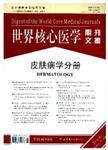超老龄缺血性卒中或TIA患者的次级预防药物处方
Secondary-prevention drug prescription in the very elderly after ischemic stroke or TIA作者机构:Stroke Center Department of Neurology University of California at Los Angeles 710 Westwood Plaza Los Angeles CA 90095 United States Dr.
出 版 物:《世界核心医学期刊文摘(神经病学分册)》 (Digest of the World Core Medical Journals.Clinical Neurology)
年 卷 期:2006年第10期
页 面:28-29页
学科分类:1002[医学-临床医学] 100204[医学-神经病学] 10[医学]
摘 要:Background: An age bias may exist in the prescription of important secondary- preventive therapies in the elderly. Objective: To evaluate patterns of drug prescription for cardiovascular prevention in the very elderly following hospitalization for an acute ischemic stroke or TIA. Methods: The authors compared subjects ages ≥ 80 with those 80 in the California Acute Stroke Prototype Registry to evaluate the impact of age on receipt of secondary- prevention medications at the time of hospital discharge. Prespecified secondary- prevention drug classes studied were antithrombotics, lipid- lowering agents, and antihypertensives. Results: Overall, there were 260 patients age ≥ 80 and 534 age 80 admitted with stroke or TIA during the study period. Patients ≥ 80 years were less likely to receive actual treatment with antithrombotic medications (p = 0.002) and lipid- lowering medications (p = 0.005) but were more likely to receive antihypertensive medications (p = 0.0007) than their younger counterparts. With regard to optimal treatment (defined as receipt of, or a valid contraindication to, treatment in each category), those ≥ 80 were equally likely to receive antithrombotic medications and lipid therapy but remained more likely to receive antihypertensive treatment (77.7 vs 67.0% ; p = 0.0007). There were no differences in receipt of optimal combination therapy (defined as optimal treatment in all three therapeutic classes) between patient age groups, even when adjusted for medical history. Conclusion: After hospitalization for stroke or TIA, no differences in overall optimal treatment prescription of secondary- prevention medications between patients ages ≥ 80 and their younger counterparts were observed.



